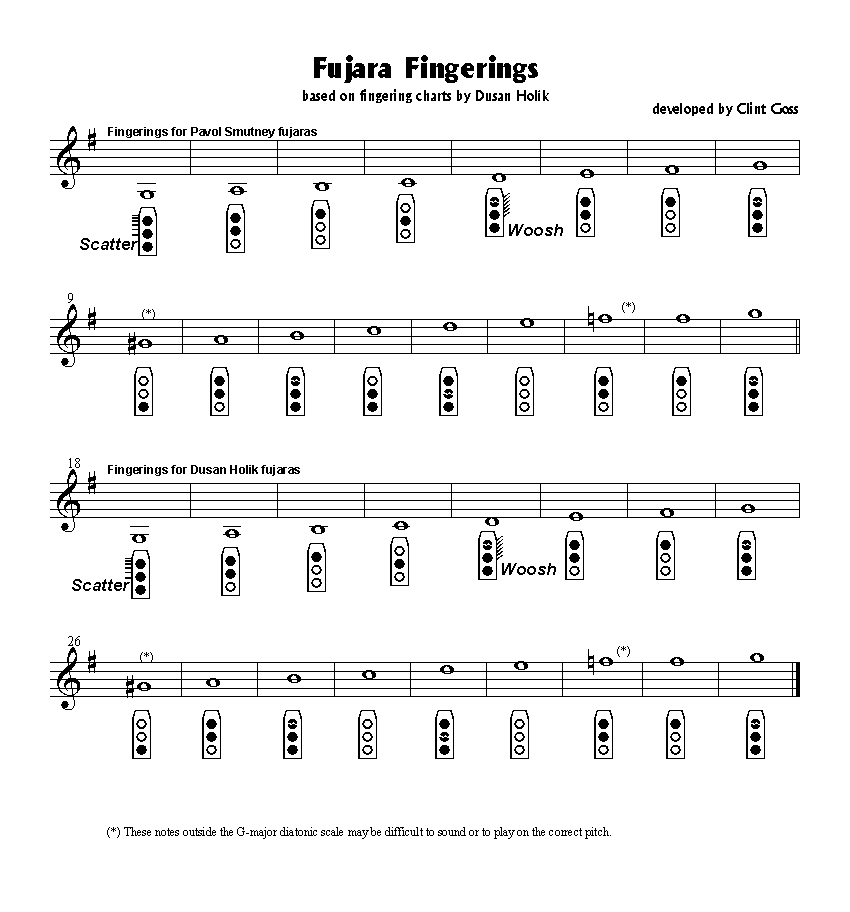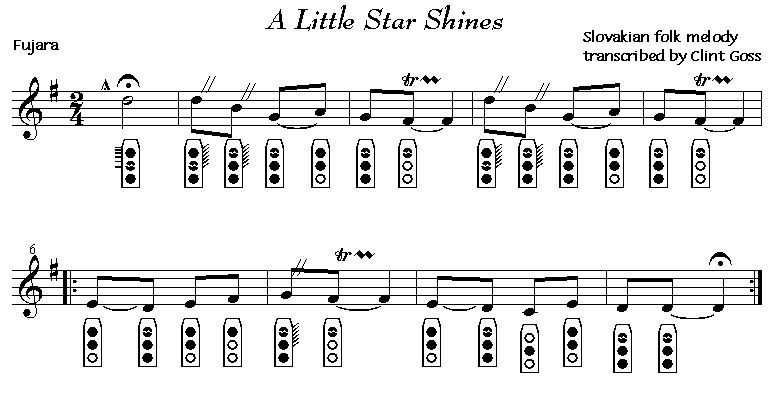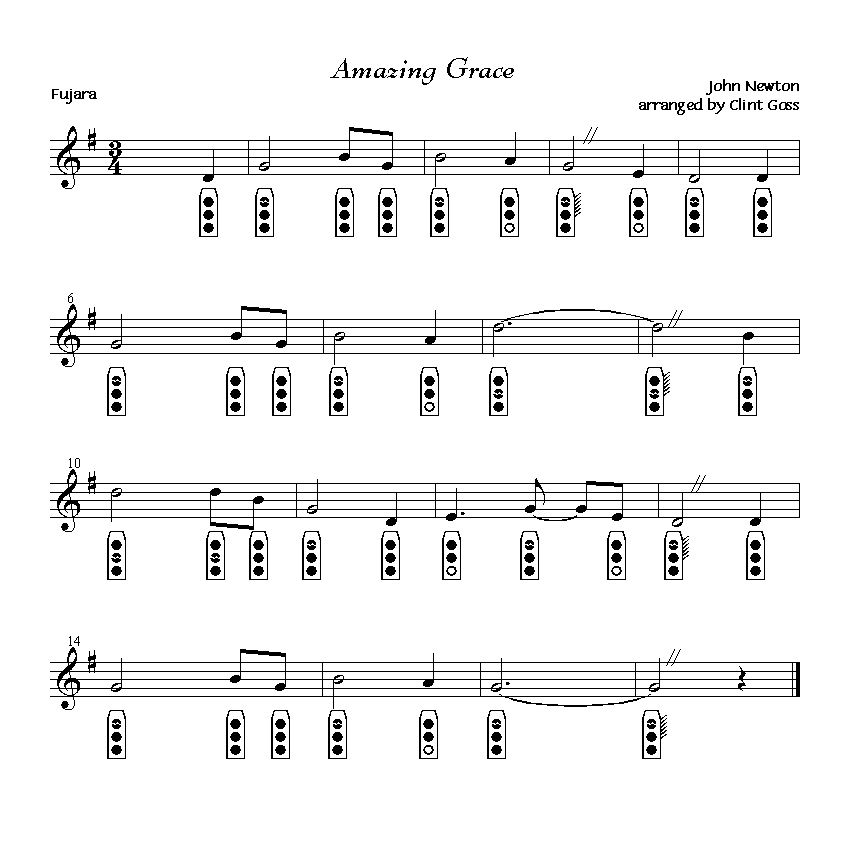Fujara fingerings:( developed by Clint Goss )
|
Wiggly Line: That symbol in the finger diagrams is intended to convey a trill on that hole. The hole for the trill is typically one that causes a small change in pitch (maybe a 1/4 tone) so the effect is a vibrato. This seems to me to sound better than trying to do vibrato from the diaphram.
Due to the Fujara flute construction it is not possible to play all these notes precisely. So, it is not a fault of your Fujara flute if it plays some of the notes a quarter tone higher or lower !
Find out more about Fujara flute tuning.


Download the audio sample of folk fujara song “A Little Star Shines”,
performed & recorded by Tomas Kovac on collapsible fujara in G. 
Scatter. A high-intensity ornament particular to the fujara that is often used at the beginning of songs. It begins with a high-itensity, repeated percussive blow that can be made by saying something like “DA DA DA Da Da Da da da da …” Where the pressure of each “Da” gets less and less and the fujara descends through the overtone scale.
Woosh. An ornament added onto the end of some notes in a song. It is done with a steady, rapidly increasing blow of air that cause a very fast ascending scale up the fujara.
Wiggly Line: That symbol in the finger diagrams is intended to convey a trill on that hole. The hole for the trill is typically one that causes a small change in pitch (maybe a 1/4 tone) so the effect is a vibrato. This seems to me to sound better than trying to do vibrato from the diaphram.
Flutekey – home to resources for the Native American Flute, and Fujara.
Fingering chartes are taken from Flutekey, thanks to Clint Goss, our grateful customer and devoted fujara player!